SNOWBOARD TERMS EVERY BEGINNER SHOULD KNOW
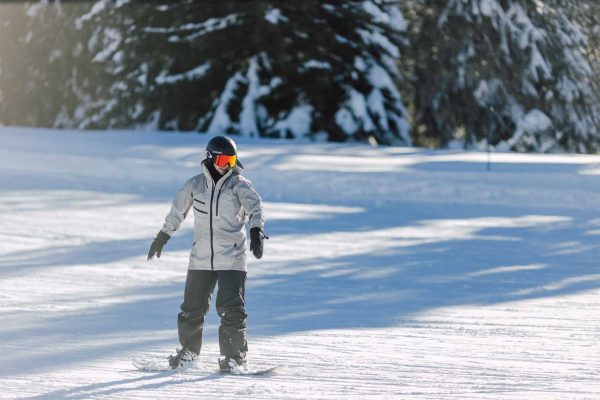
Welcome to the exciting world of snowboarding! As a beginner, you’ll quickly realise that snowboarding comes with its own unique lingo. Understanding these terms will help you to learn to snowboard and communicate better with other riders (snowboarders!). Here are some useful snowboard terms that will help you get started:
- Stance
Your stance refers to how you stand on your snowboard. There are two main types:
- Regular: Left foot forward
- Goofy: Right foot forward
Stance also refers to the angles at which your bindings are set on your board as well as their width apart. Your bindings should be set up in a way that allows you to stand in your natural stance, the position that works best for your body. Finding your natural stance is the key to riding your snowboard effectively and is something that snowboard instructors can help you with.
- Edge
A snowboard has two metal edges:
- Toe Edge: The edge closest to your toes.
- Heel Edge: The edge closest to your heels.
When a snowboard is tilted on its edge, the sharp corner cuts into the snow which is what gives you control. Learning to use your edges effectively is essential to steering your board and controlling your speed.

- Piste
A piste refers to the slopes on a mountain where the snow has been smoothed and flattened, or groomed, to make it ideal for both skiers and snowboarders. These maintained, marked runs are colour graded to indicate the level of difficulty. Generally in Europe a green slope is the easiest and includes the resort’s beginner areas. Next up are blue pistes, great for those who have mastered their turns on green slopes and wish to progress, but equally enjoyed by more confident riders. Red pistes are the following step up with steeper gradients giving riders more of a challenge. The most challenging marked pistes however are black slopes, which may or may not be groomed and are definitely not for the faint hearted!
As a snowboarder you also need to be aware that what qualifies as an easier slope for skiers might not be for us! A narrow, flat run which may be marked as green or blue on a piste map is relatively easy on skis, however requires much more skill to tackle on a snowboard. Continuing with good tuition beyond the beginner level is essential to learning skills to ride all types pistes with confidence as well as avoiding injuries along the way.
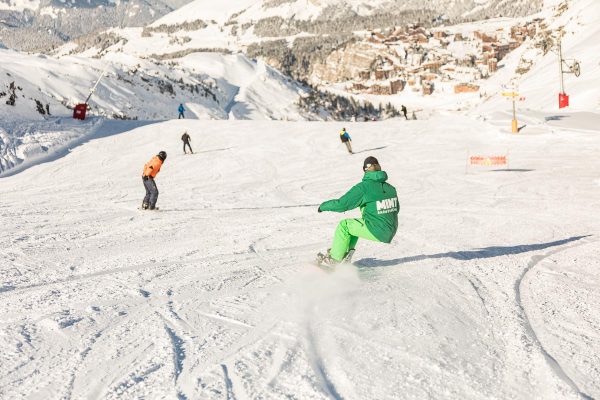
- Switch
Riding switch means riding with your non-dominant foot facing forward, i.e with the opposite foot forward than you would normally ride with. So if you usually ride regular (left foot forwards), switch would mean riding goofy (right foot forwards), and vice versa.
Learning to ride switch is not only a fun way to challenge yourself, but it’s also a great skill which unlocks a more versatile riding style.
- Carving
Carving is a turning technique where you use the edges of your snowboard to make smooth, clean turns. In a carved turn your snowboard travels along the direction of the edge as opposed to skidding at an angle across the direction of travel.
Once you are confident riding most slopes, learning to carve will be one of the next steps in your progression. Coaching will be focused on gaining a high level of control over your edges, learning to go faster and tilt both your board and body towards the snow. Carving is heaps of fun on a wide, open & well groomed slope as well as an essential skill to learn when becoming a more advanced rider.
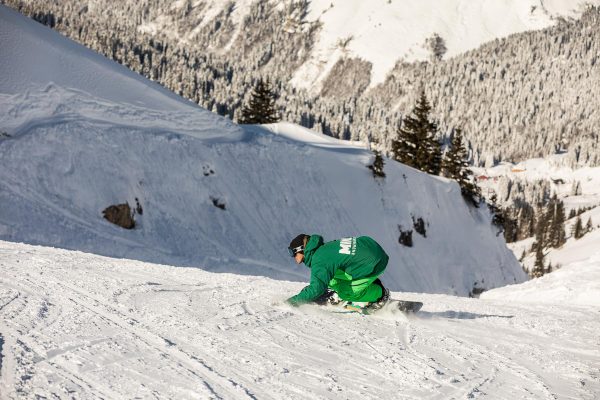
- Ollie
An ollie is one of the first basic snowboard tricks that you will learn. It is a skill that originates from skateboarding and is the means for getting air on a snowboard without needing to go off an actual jump. Learning to ollie is about precise timing and getting a perfect pop using your boards flex.
It is worth committing to lots of time and practice to mastering a good ollie, as it is an essential prerequisite for most snowboard tricks. Even if you do not have any freestyle ambitions, learning to ollie will help you develop board skills which will add to your overall snowboarding progression.
- Freestyle
Freestyle snowboarding focuses on performing tricks and jumps. There is a huge variety within freestyle riding which can be enjoyed just about anywhere on the mountain. Most frequently it involves riding man made features in a snowpark, such as jumps, rails and the halfpipe. Most resorts will have at least one snowpark with features of different sizes to cater for riders of different levels. Freestyle riding can also be performed on the slopes involving learning tricks or combinations of ‘flatland’ tricks or jibs, jumping off side hits or natural jumps in the backcountry.
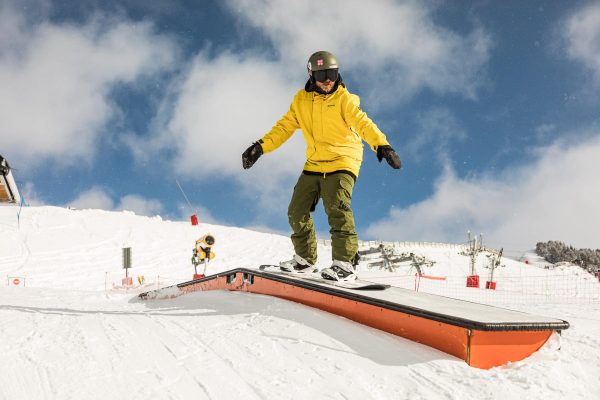
- Freeride
Freeride snowboarding is all about riding all of the mountain and making the most of the conditions. It may include carving up a groomed trail but is most commonly used to describe getting outside of the pisted area and into natural terrain, known as off piste. Freeriding involves riding all types of snow conditions, including fresh snow or powder. It involves riding whatever the natural terrain has to offer, which might include navigating through dense forests, riding wide open slopes or through steeper, more technical terrain.
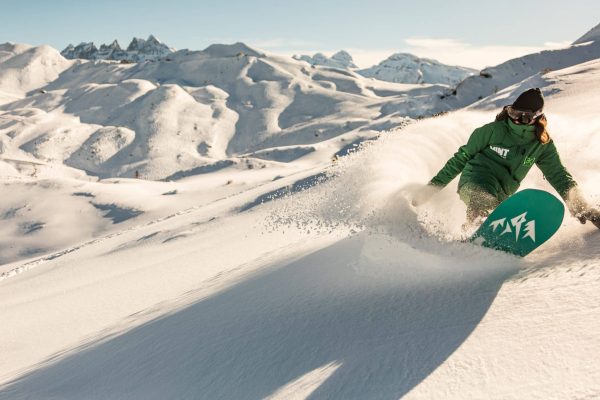
Understanding these basic snowboard terms will help you navigate the slopes with confidence and connect with other snowboarders. At MINT Snowboarding, we’re here to help you every step of the way, from learning the lingo to mastering your first turns!